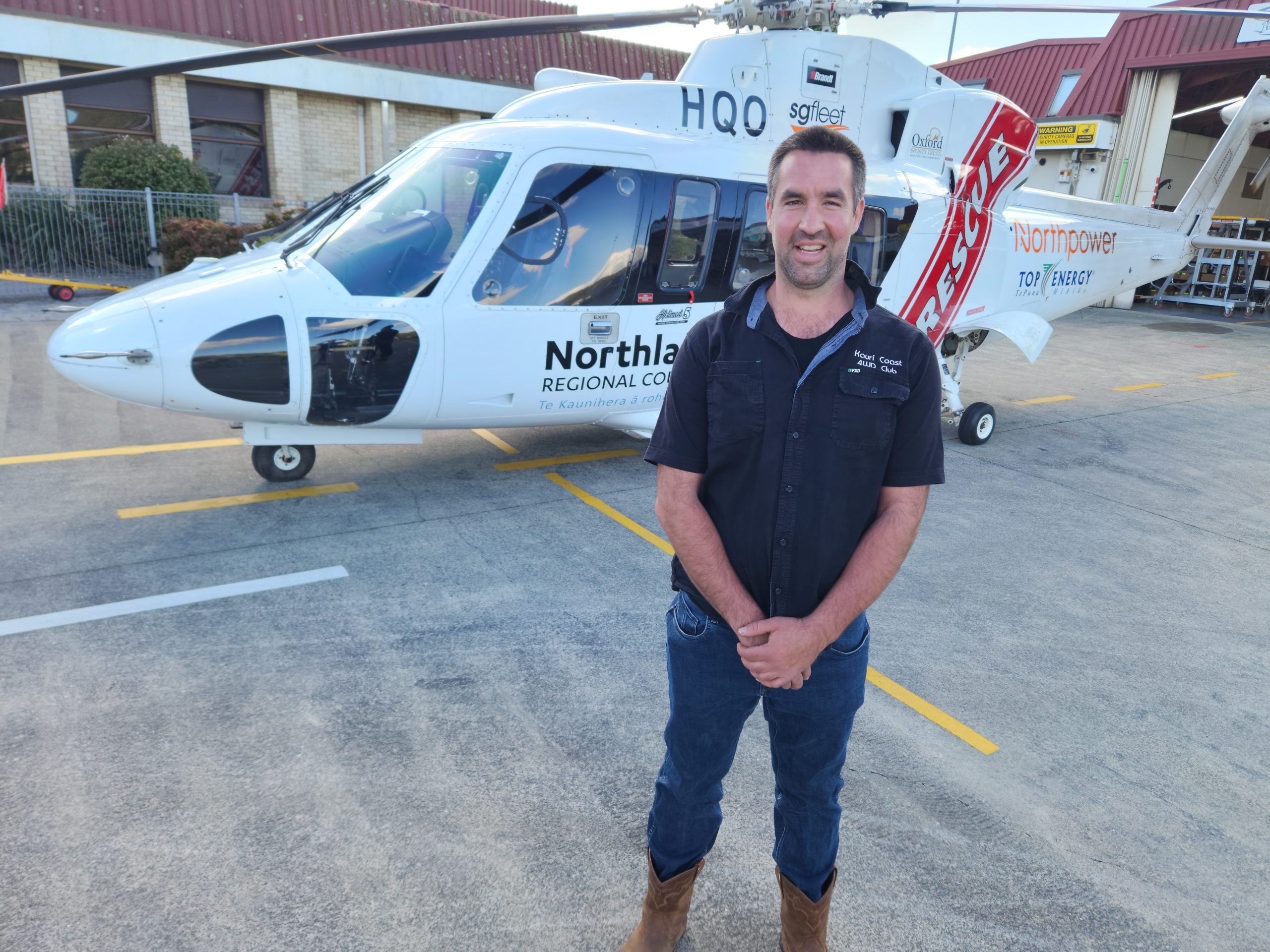Amputation avoided thanks to a Northland Rescue Helicopter flight
Too many farmers are not armed with communication devices in case of serious accidents or illness, according to a Northland farmer.
Glen Newlove says he is lucky to be alive after being crushed in a farm accident a decade ago.
Was it not for the quick actions of farm staff and his family in calling emergency services and attending to him, Glen would likely not be with us today.
But recalling the incident and subsequent trauma through his lengthy road to recovery, Glen still becomes emotional all these years later.
“A lot of farmers work on their own in remote, inaccessible places – often out of cell phone coverage. Not enough of them have a form of communication in case of accident,” says Glen.
“That’s why the Northland Rescue Chopper crews are virtually lifesavers. They’re dedicated, professional and their response times are incredible. It’s vital everyone helps to keep them in the air by donating during the annual appeal or sponsoring them annually.
“Going back to the hangar and meeting the crews who put themselves out there 24/7 to look after us all in the community was really emotional for me.
And that’s why, as a member of the Kauri Coast Four Wheel Drive Club, Glen is so driven to do fundraising 4WD trips for the Northland Rescue Helicopters.
In September 2014, Glen was standing between the tractor bucket and maize silage stack, which, unlike most stacks had a 30cm-thick concrete-like crust on top due to the crop being harvested too early due for fear of a pending cyclone wiping the crop out.
As he poured a mineral powder into a bucket to mix with the maize, the stack behind him (which was higher than the tractor) collapsed like an avalanche on top of him.
“A chunk of crust the size of a small car fell on top of me, crushing me into the tractor bucket.
“Initially I was knocked unconscious. After waking up, I remember trying to move and realising I must be badly hurt and that it could be the end of my life. I screamed for help until I lost consciousness again. I actually thought me passing out was me dying. I remember the farm staff finding me and calling emergency services.
“They were shocked and upset, which probably got worse once I arrived at Auckland hospital and they learned the full extent of my injuries.
“Seeing the reactions of my family and farm staff on the scene was quite scary, because the whole time I didn’t really know what had happened, and seeing their reactions made me think I must very seriously hurt.
“Hearing that Northland Rescue Chopper flying in, out of all the confusion, I knew what that sound was. That was the best sound ever. That memory, that moment, will stick with me for the rest of my life.
“I don’t have much recollection of the first two weeks in hospital, I was in the in the High Dependency Unit (HDU for the first two weeks. But the brief snippets of memory that I do have, were very scary as amputation from above the knee down was looking highly likely, and also, my family were in constant tears.”
Glen underwent two major vascular surgeries in the first three days where they made a new artery for his left leg with a vein from his right leg, along with having pressure released to reduce swelling in his lower left leg. He also had plates inserted into his left arm.
After his initial fortnight in hospital, Glen spent a month in Auckland Hospital’s orthopaedic ward waiting for his vascular surgery to heal and awaiting a total knee reconstruction. Due to the complexity of the surgery, two specialist orthopaedic knee surgeons were required – who had to synchronise their schedules to reconstruct his knee. It was one of the worst knee injuries ever seen in Auckland Hospital.
“In amongst all that, there were several trips to theatre for metal wear to be removed or altered. Two weeks after the knee surgery I was transferred to Whangārei Hospital where I started my rehabilitation for a further two weeks before returning home in a wheelchair – a total of two months in hospital.”
But life at home was far from smooth sailing, says Glen.
“I had a couple of falls during my recovery which ruptured one of the repaired ligaments. I also developed infections which resulted in two further knee surgeries, with ligaments being removed and the replaced again over the space of a further 2.5 years.
“I had a total of 16 surgery’s over 3 years and rehab consisted of learning to walk again – starting in Whangārei Hospital. The pain and swelling in my left leg was overwhelming for a start.
“It took months of going to a gym to build muscle with the help of my physio, which was repeated three times after developing infections and having to have ligaments removed and then replaced again six months later. I spent over 12 months in a range-of-movement brace from my hip to my ankle. At one point I was driving to Auckland once a week to have a dressing changed by the surgeon’s wound specialist nurse.”
Glen says his lasting nerve damage doesn’t hold him back much – he is a bit slower doing manual tasks like fencing and shearing – and while he expects arthritis in future, he prefers to focus on the now.
“So, life looks good.”





